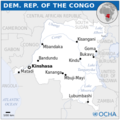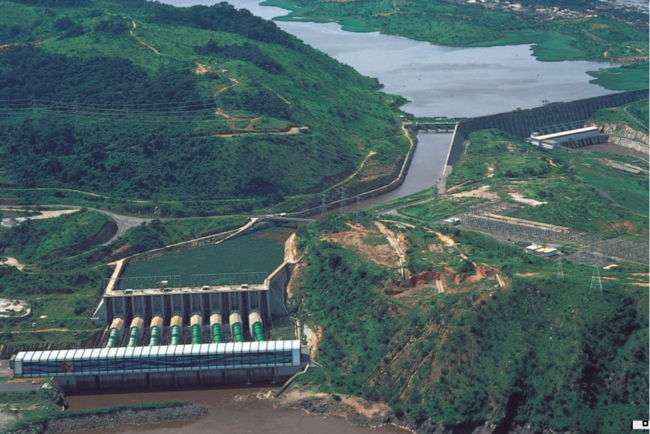Difference between revisions of "Democratic Republic of the Congo Energy Situation"
***** (***** | *****) |
***** (***** | *****) m (→References) |
||
| Line 61: | Line 61: | ||
= Further Information = | = Further Information = | ||
| + | |||
= References = | = References = | ||
| + | |||
| + | <references /><br/> | ||
Revision as of 13:41, 5 August 2019
Capital:
Kinshasa
Region:
Coordinates:
2.8800° S, 23.6560° E
Total Area (km²): It includes a country's total area, including areas under inland bodies of water and some coastal waterways.
2,344,860
Population: It is based on the de facto definition of population, which counts all residents regardless of legal status or citizenship--except for refugees not permanently settled in the country of asylum, who are generally considered part of the population of their country of origin.
99,010,212 (2022)
Rural Population (% of total population): It refers to people living in rural areas as defined by national statistical offices. It is calculated as the difference between total population and urban population.
53 (2022)
GDP (current US$): It is the sum of gross value added by all resident producers in the economy plus any product taxes and minus any subsidies not included in the value of the products. It is calculated without making deductions for depreciation of fabricated assets or for depletion and degradation of natural resources.
64,718,641,221 (2022)
GDP Per Capita (current US$): It is gross domestic product divided by midyear population
653.66 (2022)
Access to Electricity (% of population): It is the percentage of population with access to electricity.
20.77 (2021)
Energy Imports Net (% of energy use): It is estimated as energy use less production, both measured in oil equivalents. A negative value indicates that the country is a net exporter. Energy use refers to use of primary energy before transformation to other end-use fuels, which is equal to indigenous production plus imports and stock changes, minus exports and fuels supplied to ships and aircraft engaged in international transport.
1.96 (2014)
Fossil Fuel Energy Consumption (% of total): It comprises coal, oil, petroleum, and natural gas products.
5.36 (2014)
Introduction
The Democratic Republic of Congo (DRC) is in the center of sub-Saharan Africa. DRC is bordering the Central African Republic to the north, the Republic of Congo to the north-west & South Sudan to the north-east. On the eastern borders lie Uganda, Rwanda, Burundi & Tanzania (with Lake Tanganyika separating the borders). The South Atlantic Ocean is to the west of the country, with Angola to the south-west & Zambia to both the south and the south-east.
Energy Situation
Overview of the Country's Energy Sources
The DRC's potential to generate energy is high, having a wide range of both renewable and non-renewable energy sources[1]. The DRC's potential renewable sources are hydropower, biomass, solar, wind and geothermal, while the non-renewables would be oil, natural gas & uranium[1].
Approximatrely 9% of the country's generated domestic power comes from hydropower, specially the two Inga dams (Inga I & Inga II)[1][2].
While the country has abundancy for hydro-based power generation, the country's production of different fossil fuels such as coal and natural gas is modest and very limited[2]. The DRC's total hydropower capacity is about 100,000 MW, with the Inga damn solely counting for 40,000-45,000 MW[3].
Energy Access
Production
Installed Capacity
Consumption
Import and Export
Electricity
Energy Security
Renewable Energy
Fossil Fuels
Key Problems of the Energy Sector
Policy Framework, Laws and Regulations
Institutional Set up in the Energy Sector
Other Key Actors / Activities of Donors, Implementing Agencies, Civil Society Organisations
Further Information
References
- ↑ 1.0 1.1 1.2 Export. (2017). Congo (Democratic Republic of the) Country Commercial Guide. Retrieved from: https://www.export.gov/article?Id=Congo-Democratic-Republic-Energy
- ↑ 2.0 2.1 Reegle. (2012). Democratic Republic of Congo (2012). Retrieved from: http://www.reegle.info/policy-and-regulatory-overviews/CD
- ↑ Bertule, M. Hansen, J.I. Karavai, M. Sandbukt, S. Staun, F. Wieben, E. & Lütken, S.E. (2013). Emissions Reduction Profile: Democratic Republic of Congo. Retrieved from: http://www.acp-cd4cdm.org/media/366216/emissions-reduction-profile-dr_congo.pdf























